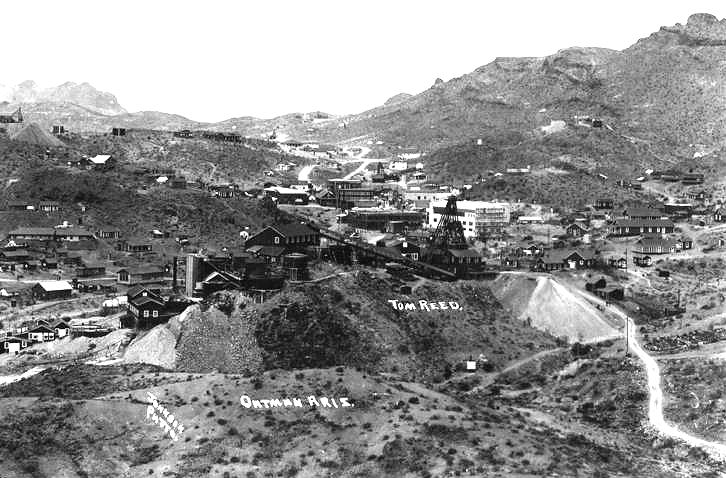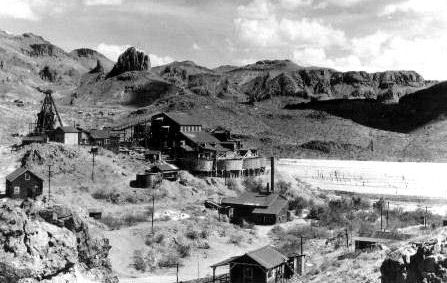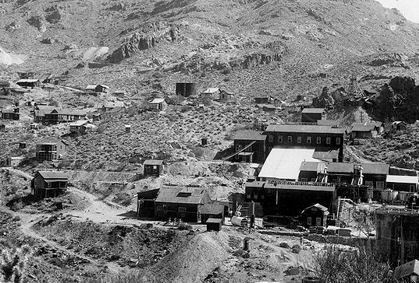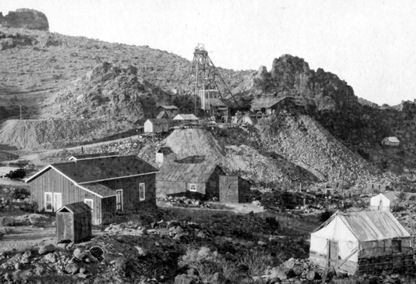How long since you talked to Paul at BLM?

Just across the Colorado River and up the hill from Laughlin, Nevada is the town of Oatman, Arizona. In its heyday, from the early 1900s to the 1940s, Oatman and the nearby town of Gold Road were the largest producers of gold in Arizona. Gold was first discovered in Oatman in 1902 by Ben Taddock who, while riding along the trail, saw free gold glittering on the ground and immediately filed a claim. A tent city soon sprang up as other miners heard of the gold find and rushed to the area.
Lacking the funds to develop a mine, Taddock sold his claim in 1903 to Judge E.M. Ross and Colonel Thomas Eqing, who in turn sold it to the Vivian Mining Company. The mining camp was named Vivian. Between 1904 and 1907 the mine yielded over $3,000,000. In 1909 the town changed its name in honor of Olive Oatman, who was kidnapped as a young girl by Apaches. The Tom Reed Mine was established in 1910. The new Tom Reed Mine breathed new life into the town, just as the Vivian Mine was about to close.
In 1915, two miners struck a $14 million gold find, providing yet another boom to the settlement.
Tom Reed Mine - Oatman
Gold Road stands in a canyon just beyond Sitgreaves Pass when traveling westbound Route 66. Prior to the town’s beginning, a man named John Moss discovered traces of gold in the area during the early 1860s, but when silver was found in abundance in the Cerbat Mountains, Moss abandoned his diggings and headed north to the Chloride area.
That didn’t stop prospectors from swarming all over the mountains and in 1900 a miner by the name of Jose Jerez hit "pay-dirt.” Grubstaked in the amount of $16.00 by store owner, Henry Lovin of Kingman, Jose was searching for his lost burro when he literally stumbled over a rich ledge of gold-bearing quartz.
Jerez packed up samples and took it to an assay, where he found it assayed at 40 ounces to the ton. Immediately, he contacted his partner, Henry, and the two wasted no time returning to the site to start digging. Within just a few months, they dug a 15-foot shaft. Their frenzied activity soon attracted the attention of a California group who bought their claim for $50,000 in 1901.
The California group soon sold their right to another group of investors for $275,000, who brought in the necessary equipment and built a mill to operate a large mine. Soon 180 miners were bringing up hundreds of thousands of dollars in ore. Around the mine, a settlement sprang up with a number of new businesses. The post office was established on April 15, 1902. Henry Lovin used his money to open a new store in Gold Road, a successful freighting company, and the Gold Road Club.
The Gold Road Mine peaked during 1905 and 1906, but the following year the rich veins began to give out and the mine closed. It was estimated that more than two million dollars in ore was taken from the mine during its short duration. However, the immediate area surrounding Gold Road continued to be a haven for other miners until 1931. In total, the district took in over seven million dollars worth of gold during this period.
Gold Road Mill and Mine Shafts No 1 and 3
Gold Road Mine





 (0)
(0) (0)
(0)




 (0)
(0) (0)
(0)